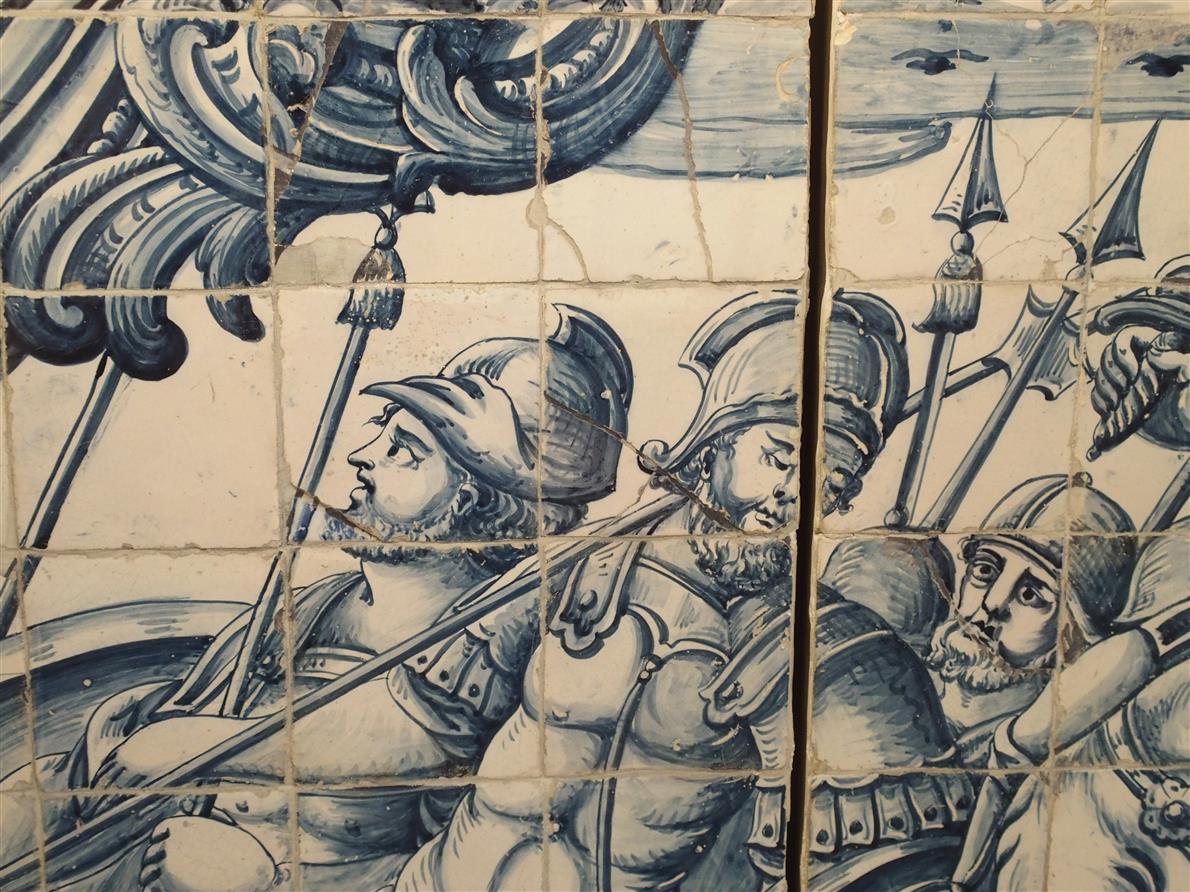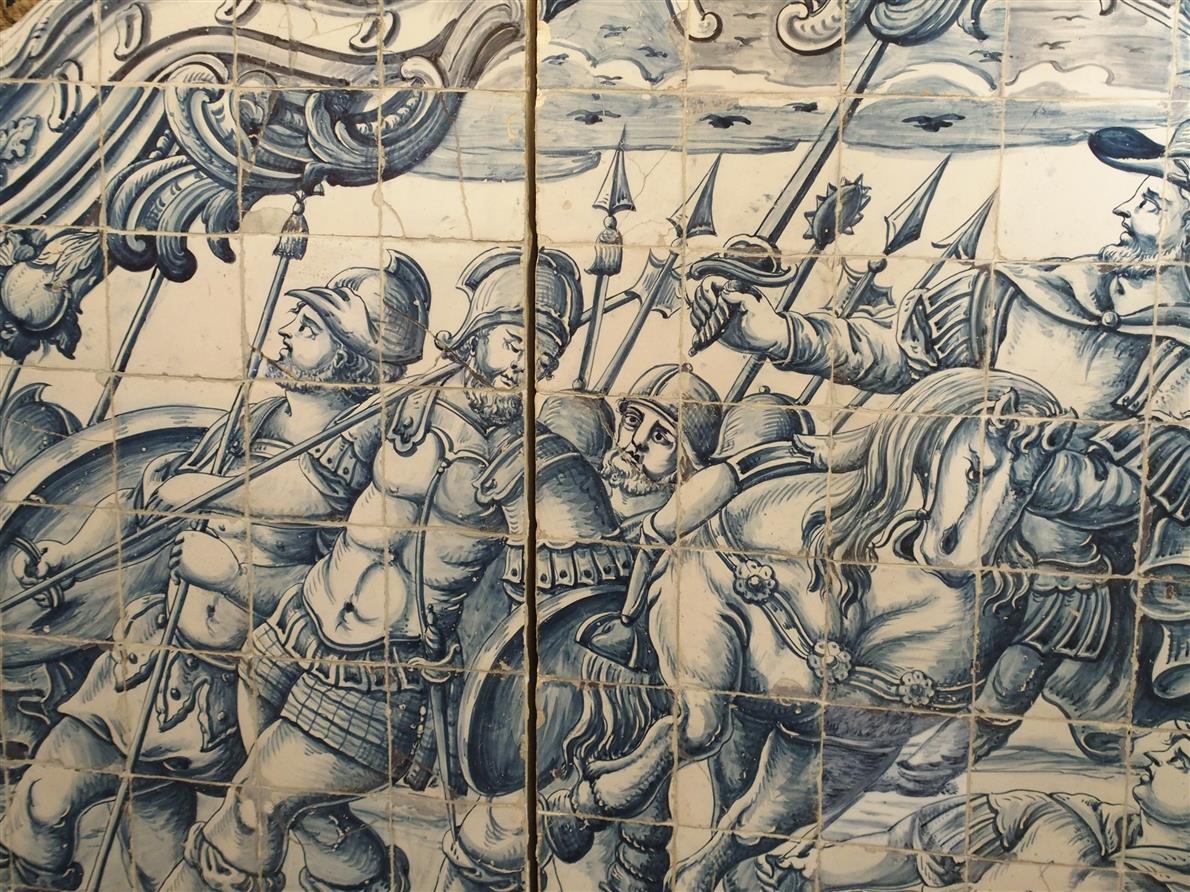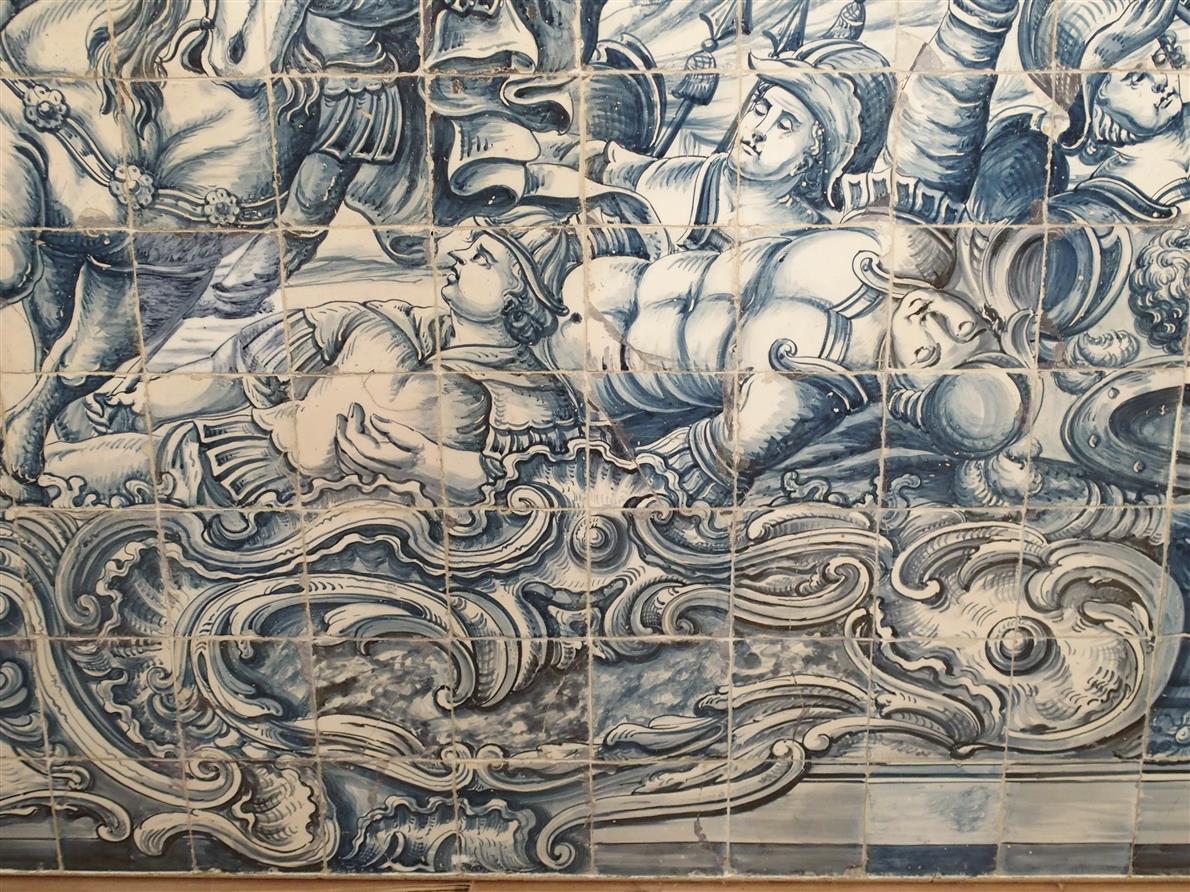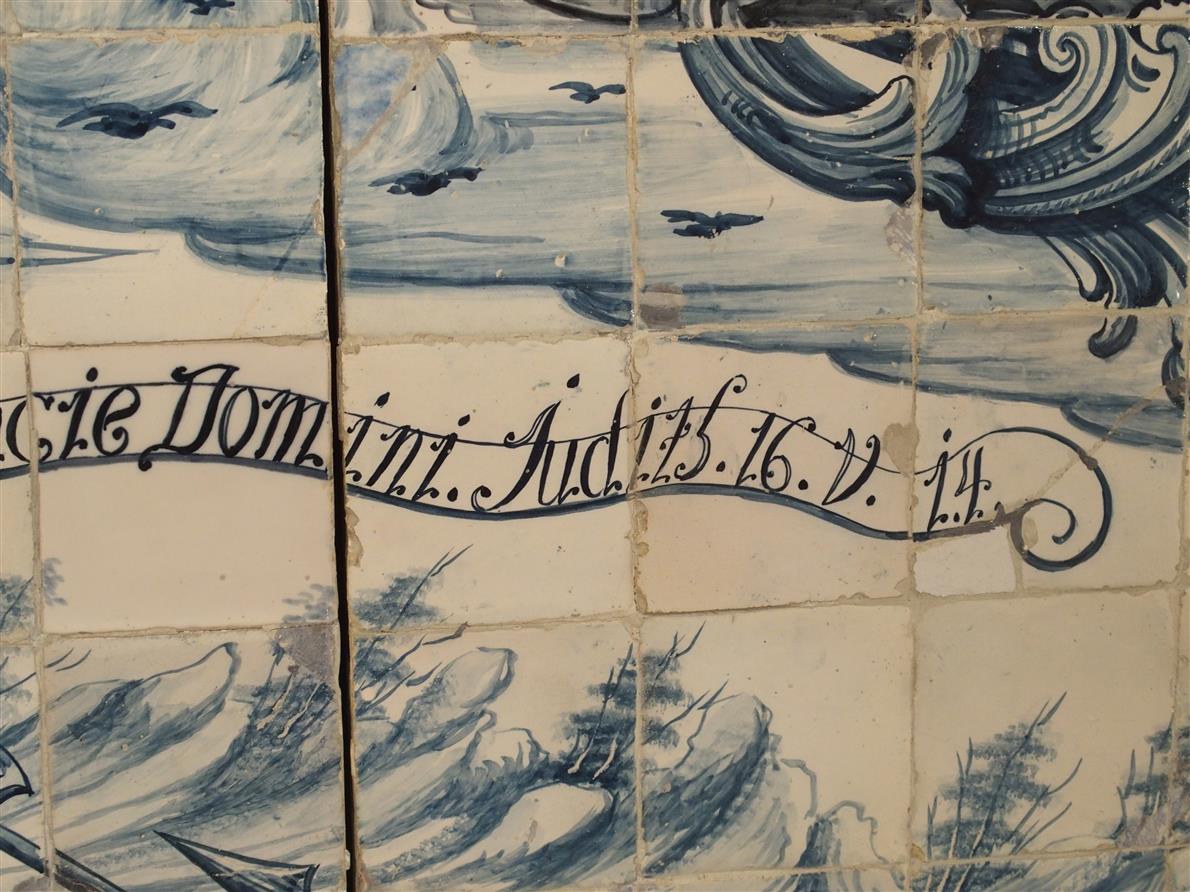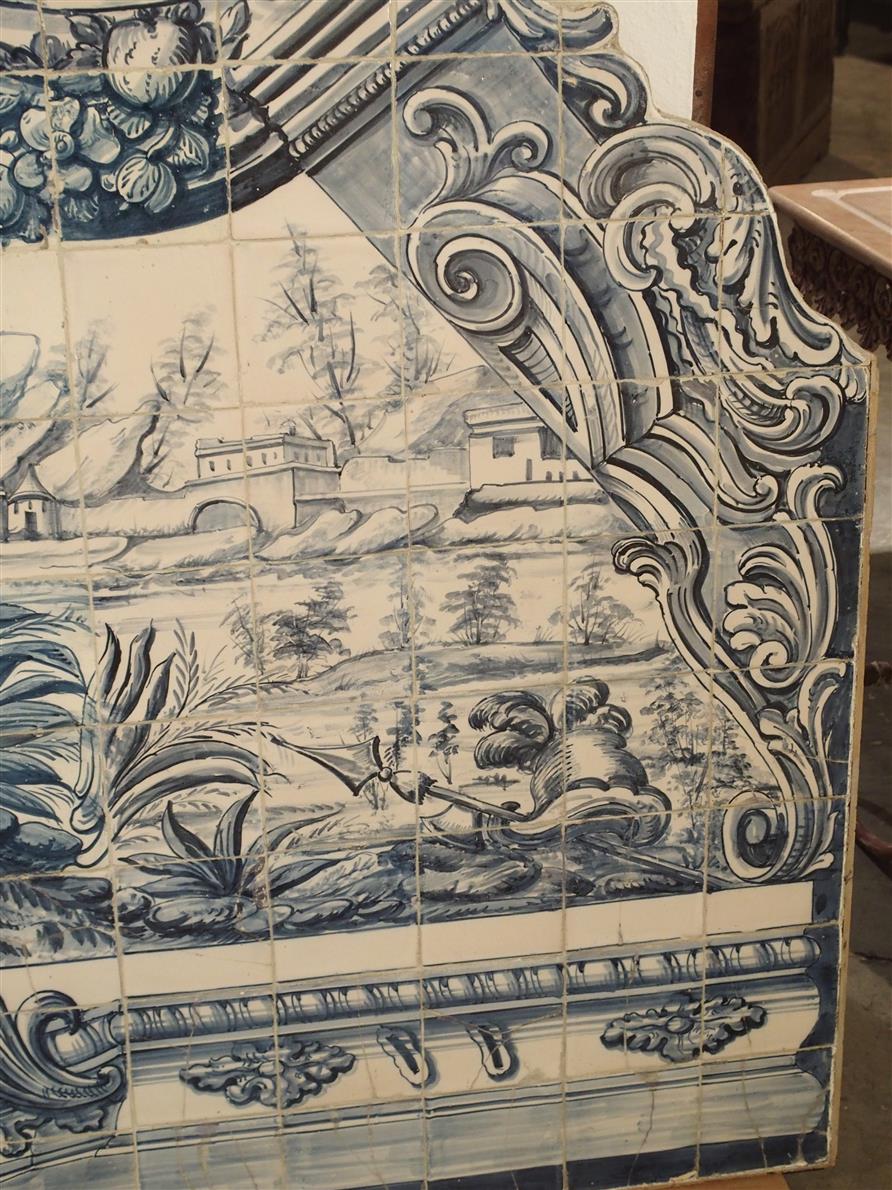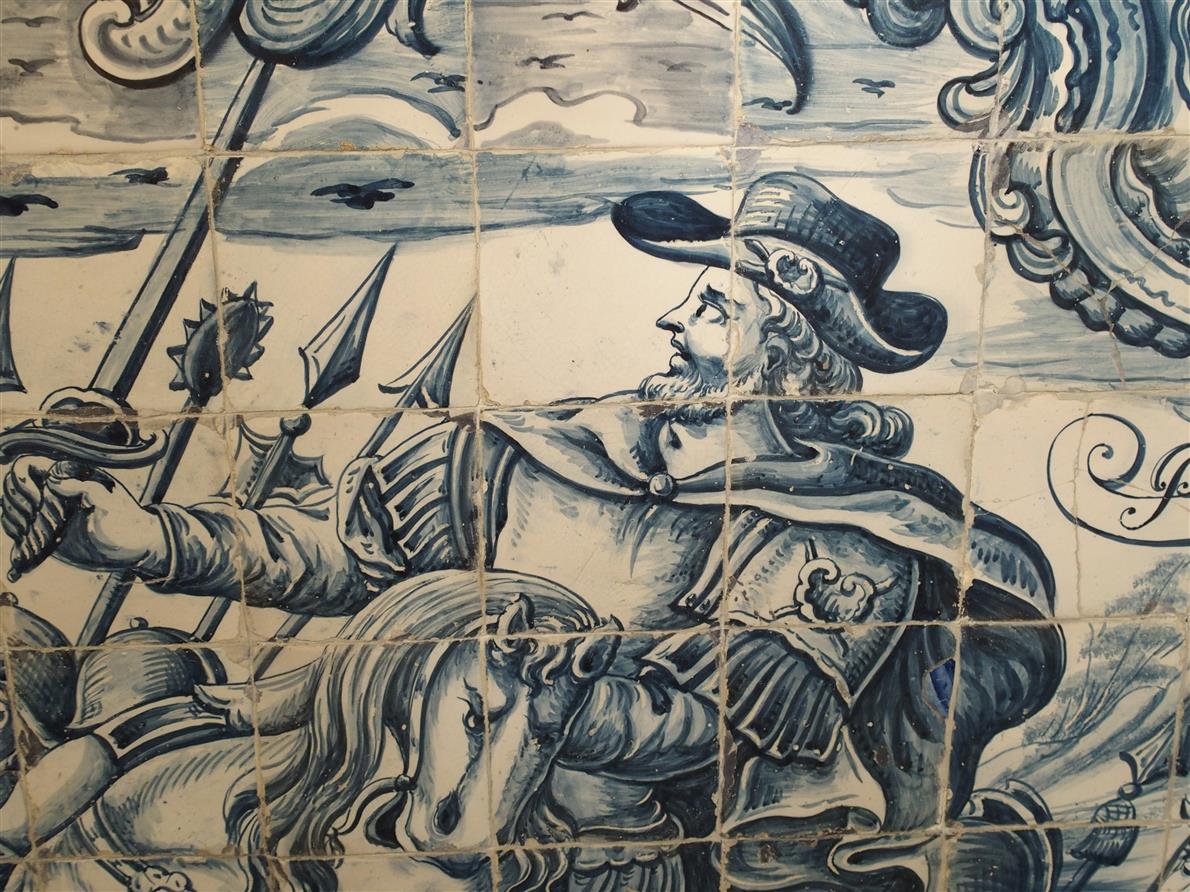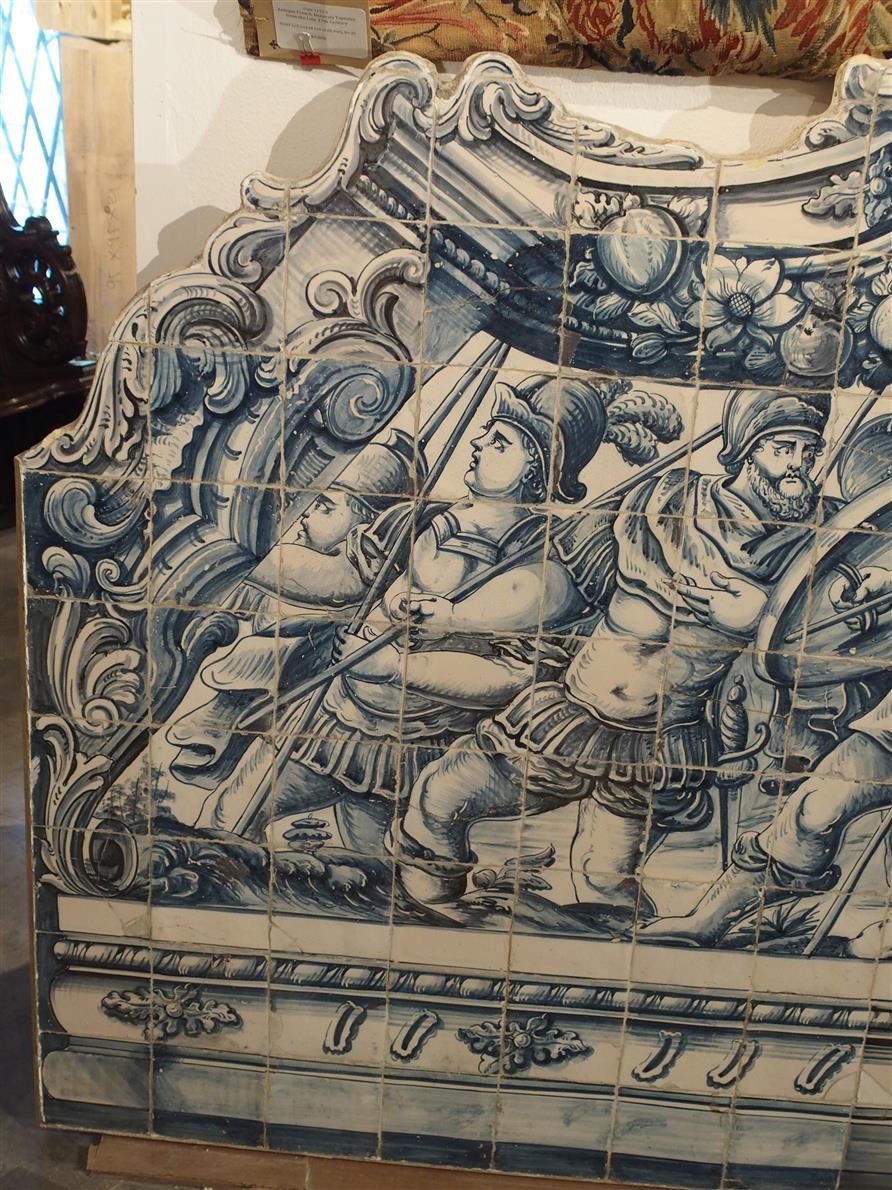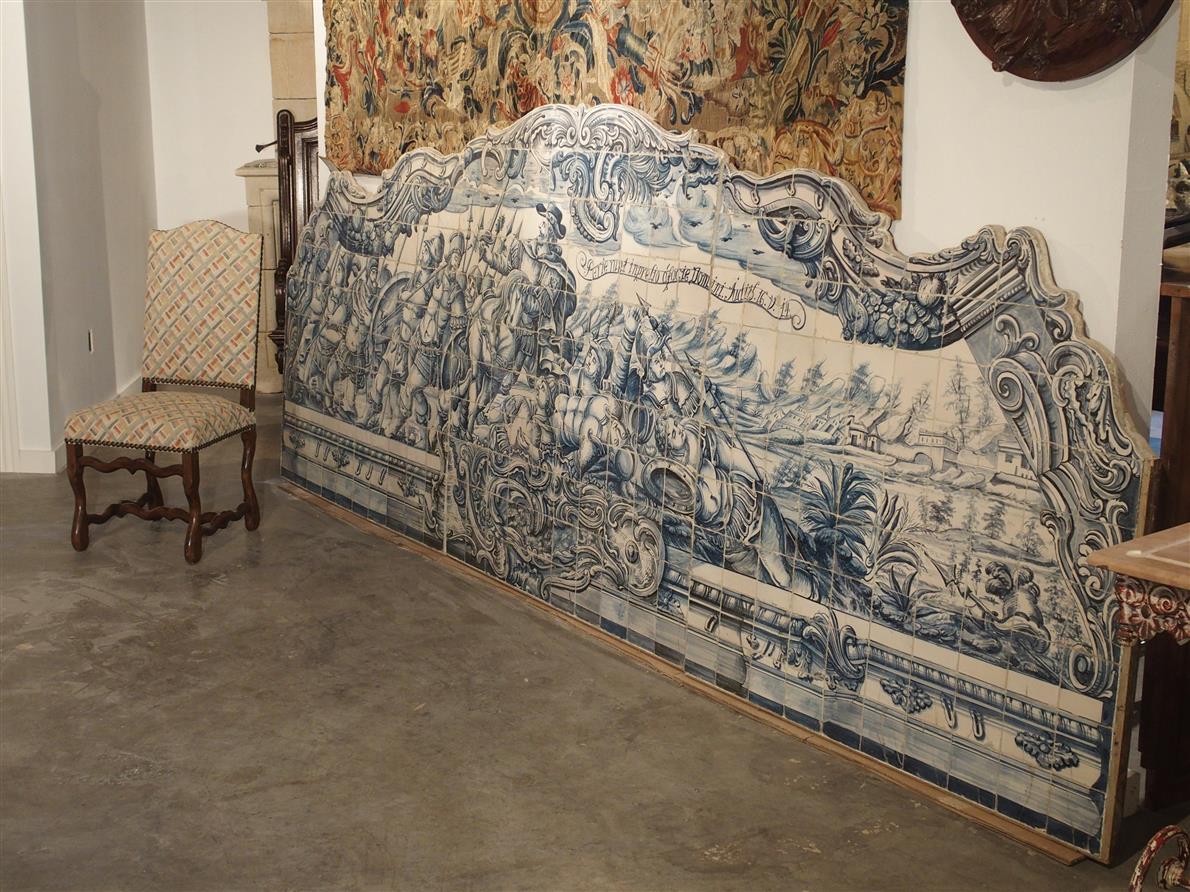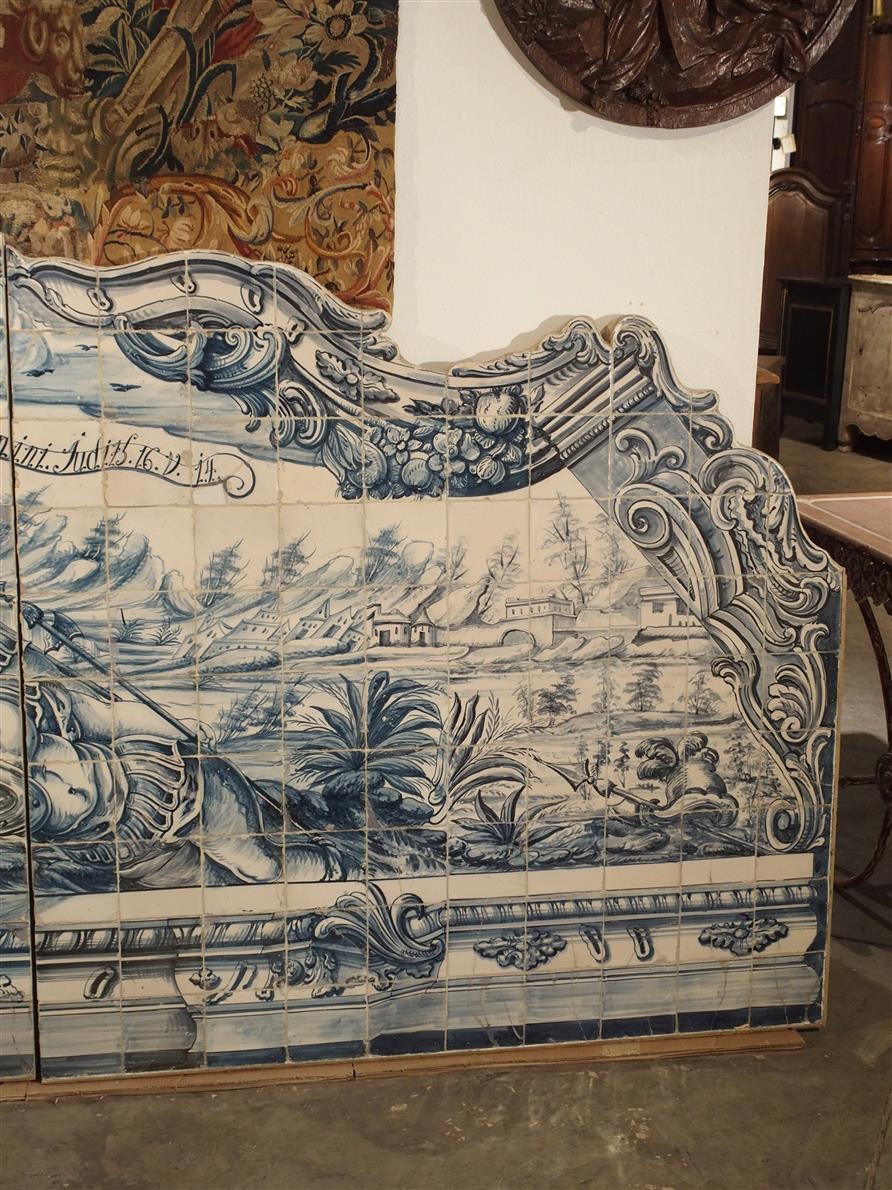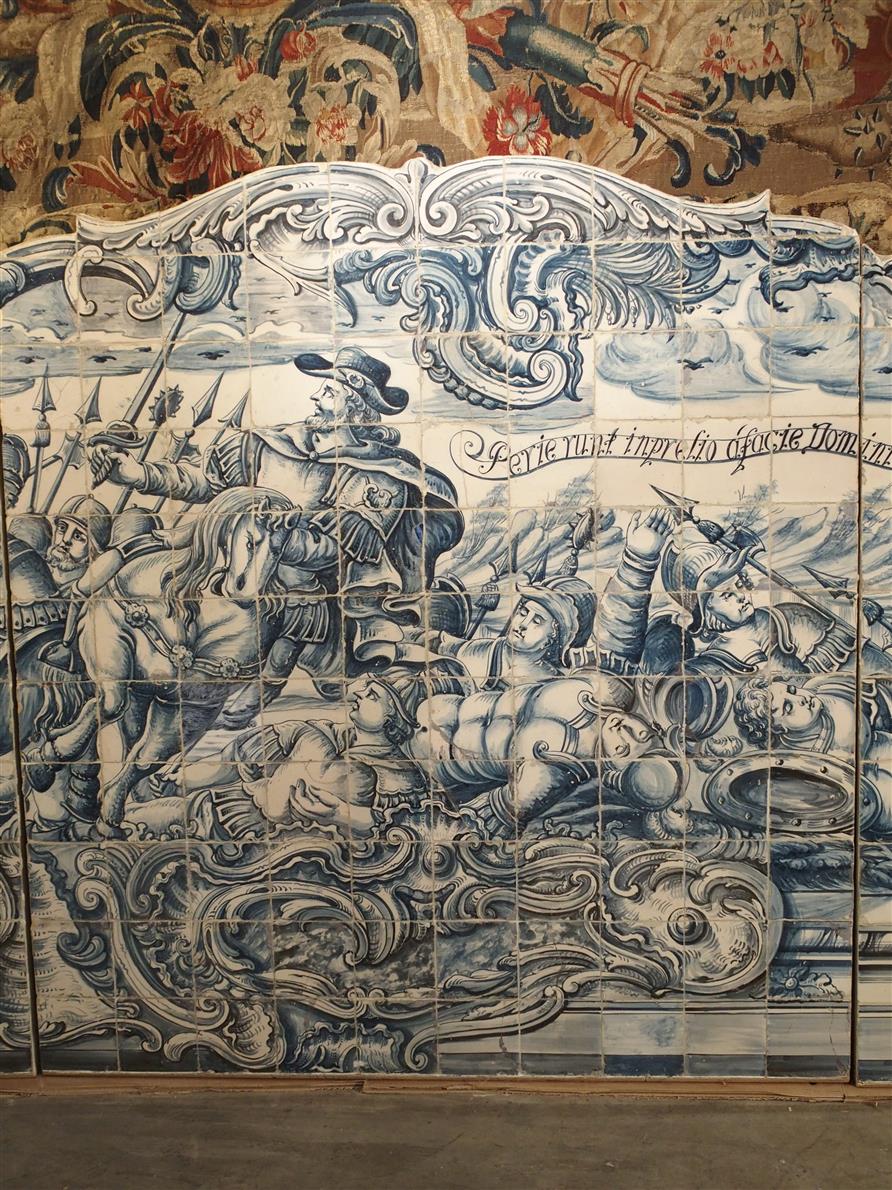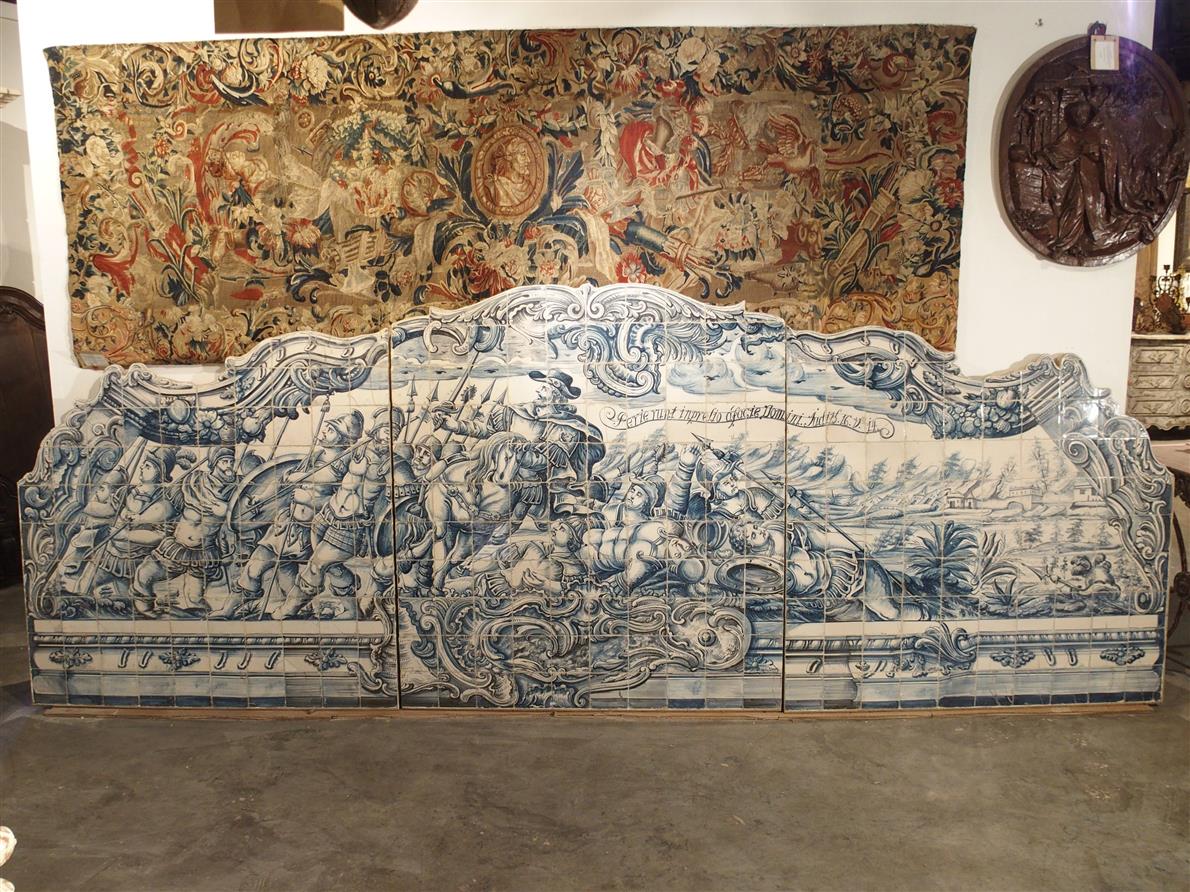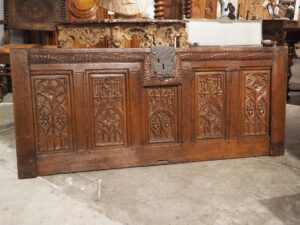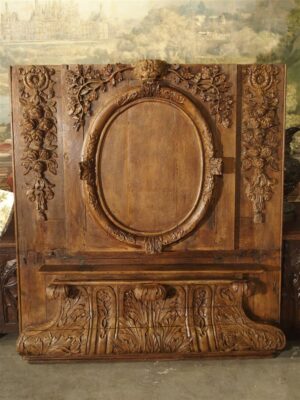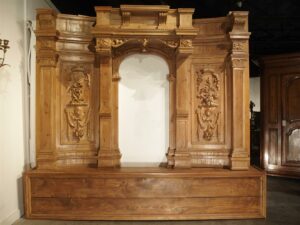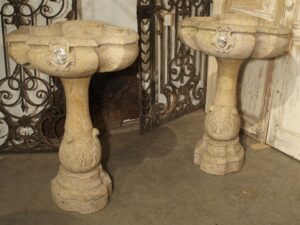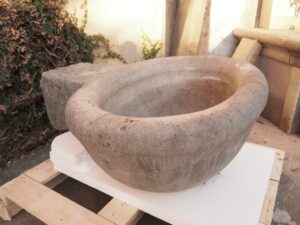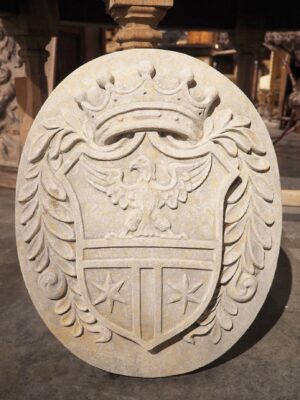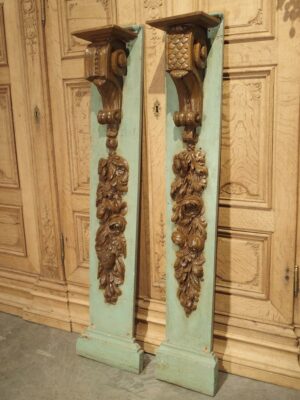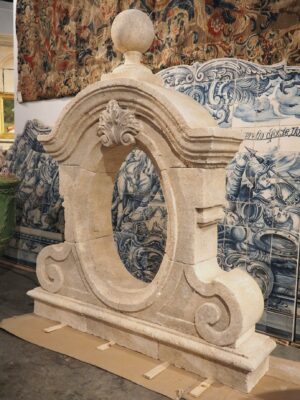This is a rare and complete antique tiled mural plaque from Portugal, dating to the mid 1700s. It is an astounding 13 feet long and most recently came from a home near the riverfront city of Coimbra.
The word azulejo literally means small square tile. For centuries, Portuguese royalty and spiritual leaders have decorated the inside and outside of their palaces, homes and churches with brilliantly colored antique Portuguese tile art. Starting in the 15th century Moorish inspired tiles were of geometric designs, colored in shades of yellows, greens, and blues. As the 17th century approached, azulejos became mostly all blue and white. This was a result of the Chinese porcelain dynasty and the Delft being produced in the Netherlands. The panel you see here was produced during the Golden Age of Portuguese Azulejo art. Narrative murals were commissioned for churches, palaces, and monasteries, and they depicted historic events and Christian figures. Starting around 1740, azulejo artwork started to represent pastoral and Rococo scenes. The influence of the French Regency style, and Rococo engravings from central Europe was keenly felt. Outstanding displays can be seen to this day on many buildings throughout Portugal, and the plaque offered here falls directly into this category.
The panel seen below has Rococo ornamentation and depicts a battle scene with landscape and architecture in the background. Across the top, is Latin writing: Perie runt inprelio a facie Domini judiz 5.16.V.14. “All Perished in Battle Facing the Judgement of the Lord”. Complete painted azulejos of this size and age are very rare. It can be dated to, circa 1750.
CONDITION: Good antique condition with restorations and repairs to some tiles. Panel is in 3 sections for easier transport.





